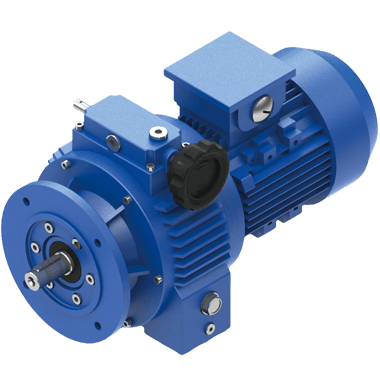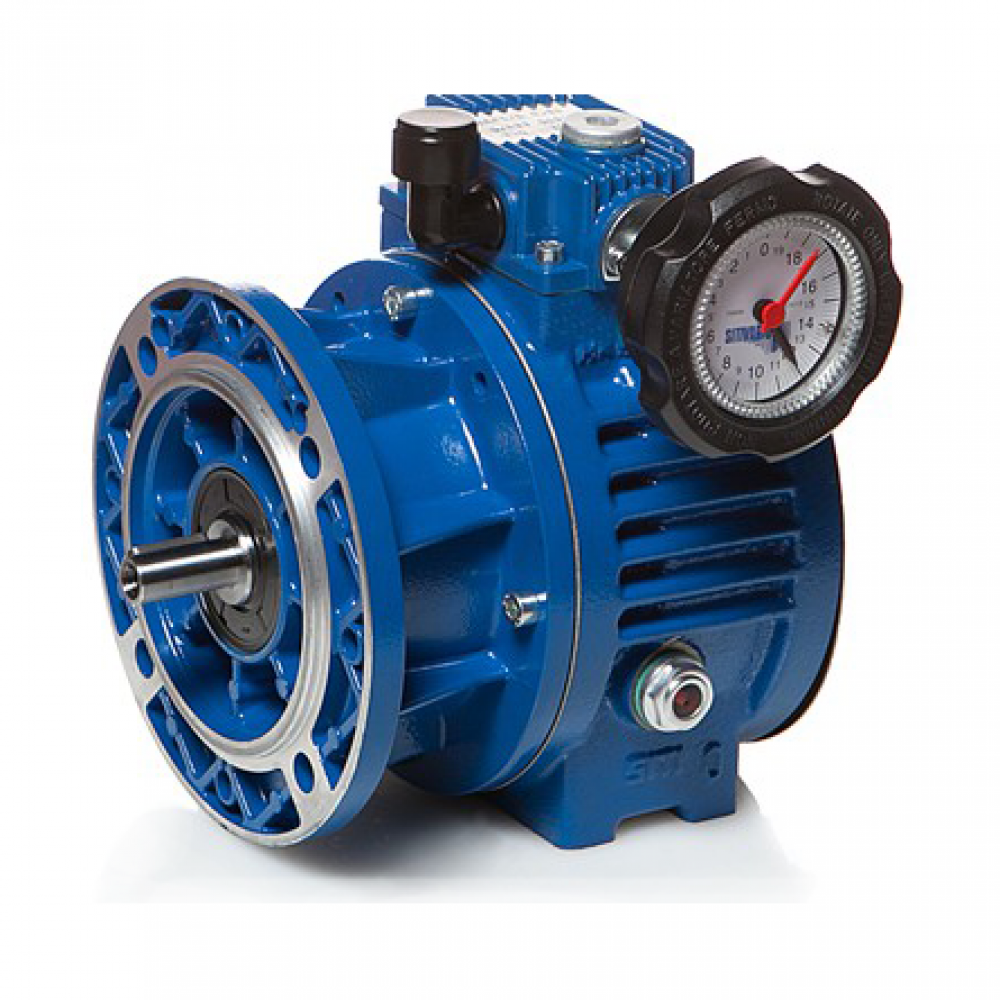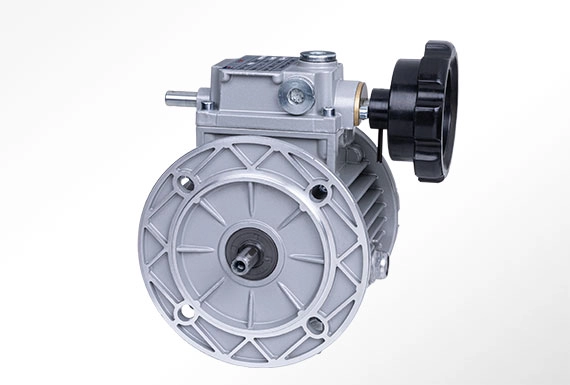Product Description
Variable Planetary Transmission Gearbox Speed Stepless Reducer 0.18kW~7.5kW Speed Variator with Motor
Features
1. High precision: 0.5-1
2. Wide speed range, the output speed ratio can be in 1/1.4 between 1/7
3. High intensity and long service life
4. Easy speed regulation
5. Continuous work, smooth operation, stable performance, and low noise
6. Whole sealing and low requirement for the environment
7. Compact organization and small size.
8. It is made of high-quality aluminum alloy with a beautiful appearance, is lightweight, and has no rusting.
9. Good adaptability. UDL series are continuously variable transmissions can combine with variable reducer units to realize low-speed continuous variable speed.
Application areas: It can be widely used in food, packaging, chemical, pharmaceutical, plastic, papermaking, machine tools, transportation, and various kinds of automatic production lines and transmission lines that need to adjust speed.
Product Photos
Product Description
| Models | Power | Ratio | O. Speed | O.Torque | O. Shaft Dia. | O. Flange Dia. |
| UDL002 | 0.18KW | 1.6~8.2 | 800~170rpm | 1.5~3N.m | Φ11 | Φ140 |
| UDL005 | 0.25KW | 1.4~7 | 1000~200rpm | 2.2~6N.m | Φ14 | Φ160 |
| UDL005 | 0.37KW | 1.4~7 | 1000~200rpm | 3~6N.m | Φ14 | Φ160 |
| UDL571 | 0.55KW | 1.4~7 | 1000~200rpm | 4~8N.m | Φ19 | Φ200 |
| UDL571 | 0.75KW | 1.4~7 | 1000~200rpm | 6~12N.m | Φ19 | Φ200 |
| UD571 | 1.1KW | 1.4~7 | 1000~200rpm | 9~18N.m | Φ24 | Φ200 |
| UD571 | 1.5KW | 1.4~7 | 1000~200rpm | 12~24N.m | Φ24 | Φ200 |
| UD030 | 2.2KW | 1.4~7 | 1000~200rpm | 18~36N.m | Φ28 | Φ250 |
| UD030 | 3.0KW | 1.4~7 | 1000~200rpm | 24~48N.m | Φ28 | Φ250 |
| UD030 | 4.0KW | 1.4~7 | 1000~200rpm | 32~64N.m | Φ28 | Φ250 |
| UD050 | 5.5KW | 1.4~7 | 1000~200rpm | 45~90N.m | Φ38 | Φ300 |
| UD050 | 7.5KW | 1.4~7 | 1000~200rpm | 59~118N.m | Φ38 | Φ300 |
FAQ
Q: Can you make the gearbox with customization?
A: Yes, we can customize as promised, like color, shaft, material, etc.
Q: Do you provide samples?
A: Yes. A sample is available for testing.
Q: What is your MOQ?
A: It is 10pcs for the beginning of our business.
Q: What's your lead time?
A: Standard products need 5-30 days, a bit longer for customized products.
Q: Do you provide technical support?
A: Yes. Our company have design and development team, we can provide technology support if you
need.
Q: How do you ship to us?
A: It is available by air, sea, or train.
Q: How to pay the money?
A: T/T and L/C are preferred, with a different currency, including USD, EUR, RMB, etc.
Q: How can I know if the product is suitable for me?
A: >1ST confirm drawing and specification >2nd test sample >3rd start mass production.
Q: Can I come to your company to visit?
A: Yes, you are welcome to visit us at any time.
Q: How shall we contact you?
A: You can send an inquiry directly, and we will respond within 24 hours.
/* March 10, 2571 17:59:20 */!function(){function s(e,r){var a,o={};try{e&&e.split(",").forEach(function(e,t){e&&(a=e.match(/(.*?):(.*)$/))&&1
| Application: | Gearbox |
|---|---|
| Hardness: | Hardened Tooth Surface |
| Installation: | Horizontal Type |
| Samples: |
US$ 100/Piece
1 Piece(Min.Order) | Order Sample Aluminum/Cast Iron
|
|---|
| Customization: |
Available
|
|
|---|
.shipping-cost-tm .tm-status-off{background: none;padding:0;color: #1470cc}
|
Shipping Cost:
Estimated freight per unit. |
about shipping cost and estimated delivery time. |
|---|
| Payment Method: |
|
|---|---|
|
Initial Payment Full Payment |
| Currency: | US$ |
|---|
| Return&refunds: | You can apply for a refund up to 30 days after receipt of the products. |
|---|
What factors should be considered when selecting a variator for different industrial applications?
When selecting a variator for different industrial applications, several factors need to be considered to ensure optimal performance and compatibility. Here are the key factors that should be taken into account:
1. Load Requirements:
The first factor to consider is the load requirements of the specific industrial application. Determine the torque and power demands of the machinery or equipment that the variator will be driving. It is essential to select a variator that can handle the anticipated load conditions without exceeding its maximum torque or power capabilities. Consider factors such as starting torque, peak torque, and continuous torque requirements to ensure the variator can handle the load effectively.
2. Speed Range:
Consider the required speed range for the application. Determine the minimum and maximum speeds that the variator needs to achieve. Variators are designed to operate within specific speed ranges, so it is crucial to select a model that can accommodate the required speed range while maintaining optimal performance. Additionally, consider the desired speed resolution or increments required for precise speed control.
3. Environmental Conditions:
Take into account the environmental conditions in which the variator will operate. Factors such as temperature, humidity, dust, and vibration levels can impact the performance and longevity of the variator. Choose a variator that is designed to withstand the specific environmental conditions of the industrial application. For example, some variators are specifically designed for harsh or hazardous environments and have enhanced protection against dust, moisture, or extreme temperatures.
4. Control System Integration:
Determine how the variator will integrate with the control system of the industrial application. Consider compatibility with existing control interfaces or protocols, such as analog, digital, or fieldbus systems. Ensure that the variator can be easily integrated into the control architecture of the machinery or equipment, allowing for seamless communication and control. Compatibility with programmable logic controllers (PLCs) or other control devices should also be evaluated.
5. Operational Efficiency:
Evaluate the operational efficiency of the variator. Look for features that contribute to energy efficiency, such as low power losses or regenerative capabilities. A variator that operates efficiently can help reduce energy consumption, lower operating costs, and minimize the environmental impact. Consider features like automatic energy optimization, energy monitoring, or sleep modes that can enhance the overall efficiency of the variator.
6. Maintenance and Serviceability:
Consider the ease of maintenance and serviceability of the variator. Look for features that simplify maintenance tasks, such as accessible components, user-friendly interfaces, and diagnostic capabilities. Additionally, consider the availability of spare parts and the reputation of the manufacturer or supplier in terms of customer support and after-sales service.
7. Cost and Budget:
Finally, evaluate the cost of the variator and its alignment with the budget for the industrial application. Consider the initial purchase cost as well as the long-term operational costs, including energy consumption, maintenance, and potential downtime. It is important to strike a balance between the desired features, performance, and cost-effectiveness to ensure the best value for the specific application.
By considering these factors - load requirements, speed range, environmental conditions, control system integration, operational efficiency, maintenance and serviceability, and cost - when selecting a variator for different industrial applications, you can make an informed decision that meets the specific needs of the machinery or equipment, ensuring reliable and efficient operation.
Are there aftermarket upgrades available for variators to enhance their functionality?
Yes, there are aftermarket upgrades available for variators that can enhance their functionality and improve the performance of vehicles. These upgrades are designed to optimize power delivery, increase durability, and provide additional features. Here's a detailed explanation of aftermarket upgrades available for variators:
1. Performance Variator Kits:
Aftermarket performance variator kits are designed to improve the overall performance of the variator. These kits often include upgraded components such as variator pulleys, sliders, and roller weights. The upgraded components are engineered to reduce friction, improve power transfer efficiency, and enhance the variator's response. Performance variator kits can provide better acceleration, increased top speed, and improved throttle response, resulting in enhanced vehicle performance.
2. Adjustable Variator Pulleys:
Adjustable variator pulleys allow users to fine-tune the gear ratios of the variator. By adjusting the pulley positions, users can customize the variator's performance to suit their specific needs and preferences. Adjustable variator pulleys can optimize power delivery, improve acceleration, and fine-tune the variator's behavior for different riding conditions or modifications made to the engine. These pulleys offer increased flexibility and control over the variator's functionality.
3. High-Performance Variator Belts:
Upgrading to high-performance variator belts can enhance the durability and power transmission capabilities of the variator. High-performance belts are designed to withstand higher temperatures and handle increased power loads. These belts often have advanced materials and construction techniques that improve their strength, flexibility, and resistance to wear. By upgrading to high-performance variator belts, users can improve the reliability and longevity of the variator, especially in high-performance or modified engine setups.
4. Variator Sliders and Roller Weights:
Aftermarket variator sliders and roller weights offer improved performance and adjustability. These components directly impact the variator's shifting characteristics and the rate at which the gear ratios change. Upgraded sliders and roller weights can provide quicker and smoother shifts, allowing for better acceleration and improved throttle response. Additionally, aftermarket sliders and roller weights come in various weights and profiles, allowing users to fine-tune the variator's behavior to match their riding style or specific performance requirements.
5. Variator Springs:
Aftermarket variator springs are designed to provide specific tension characteristics that can optimize the variator's performance. Variator springs affect the rate at which the variator engages and changes gear ratios. Upgrading to aftermarket variator springs can improve launch performance, enhance low-end torque, or provide a more progressive power delivery. By selecting springs with different tension values, riders can customize the variator's behavior to suit their riding style or desired performance characteristics.
6. Integrated Variator Tuning Modules:
Integrated variator tuning modules, often referred to as ECU or TCU (Engine Control Unit or Transmission Control Unit) tuning modules, are aftermarket devices that allow users to modify the variator's behavior through electronic control. These modules plug into the vehicle's electronic system and enable adjustments to various parameters such as shift points, shift speed, and shift firmness. By modifying the variator's electronic control settings, users can enhance performance, improve throttle response, and customize the transmission behavior to match their preferences.
7. Variator Cooling Systems:
Aftermarket variator cooling systems are designed to improve the cooling efficiency of the variator. These systems often include additional cooling fins, heat sinks, or external coolers that help dissipate heat generated during operation. By improving cooling, aftermarket variator cooling systems can prevent overheating, reduce heat-related performance losses, and increase the overall durability of the variator. These upgrades are particularly beneficial for high-performance applications or when operating in extreme conditions.
In conclusion, aftermarket upgrades for variators offer a range of options to enhance their functionality and improve vehicle performance. Performance variator kits, adjustable variator pulleys, high-performance variator belts, upgraded sliders and roller weights, variator springs, integrated variator tuning modules, and variator cooling systems are some of the available upgrades. These upgrades provide opportunities to optimize power delivery, increase durability, and customize the variator's behavior according to specific preferences or performance requirements.
Can you explain the role of a variator in continuously variable transmissions (CVTs)?
In continuously variable transmissions (CVTs), a variator plays a crucial role in providing seamless and continuous variation of the gear ratios. It is the key component that enables CVTs to offer a wide range of gear ratios without discrete gears. Here's a detailed explanation of the role of a variator in CVTs:
A CVT is a type of transmission that can vary the gear ratio continuously within a specific range, rather than having a fixed set of gears like traditional automatic or manual transmissions. The variator in a CVT is responsible for adjusting the gear ratio based on the driving conditions and driver inputs.
The variator in a CVT typically consists of two variable-diameter pulleys connected by a belt or chain. Each pulley has a pair of adjustable sheaves that can change their effective diameter. The belt or chain runs between the two pulleys, and its position on the sheaves determines the gear ratio.
When the driver accelerates or decelerates, the variator adjusts the effective diameter of the pulleys to change the position of the belt on the sheaves. This, in turn, alters the gear ratio between the input and output shafts of the transmission. By continuously adjusting the effective diameter of the pulleys, the variator allows the CVT to provide an infinite number of gear ratios within its range.
During acceleration, the variator increases the effective diameter of the driving pulley and decreases the effective diameter of the driven pulley. This causes the belt to ride higher on the driving pulley and lower on the driven pulley, resulting in a higher gear ratio. As a result, the engine can operate at higher RPMs while the vehicle accelerates smoothly.
Conversely, during deceleration or cruising, the variator adjusts the effective diameters to lower the gear ratio. This allows the engine to operate at lower RPMs, improving fuel efficiency and reducing noise levels.
The variator continuously monitors the driving conditions and adjusts the gear ratio accordingly to provide optimal performance, whether it's for smooth acceleration, efficient cruising, or maintaining a constant speed. The adjustments are typically controlled by a computer, which takes into account factors such as throttle position, vehicle speed, engine load, and driver inputs.
In summary, the variator in a CVT is responsible for continuously varying the gear ratio by adjusting the effective diameter of the pulleys. It allows the CVT to offer a wide range of gear ratios without discrete gears, providing smooth acceleration, improved fuel efficiency, and optimized performance in various driving conditions.
editor by CX 2024-01-09





